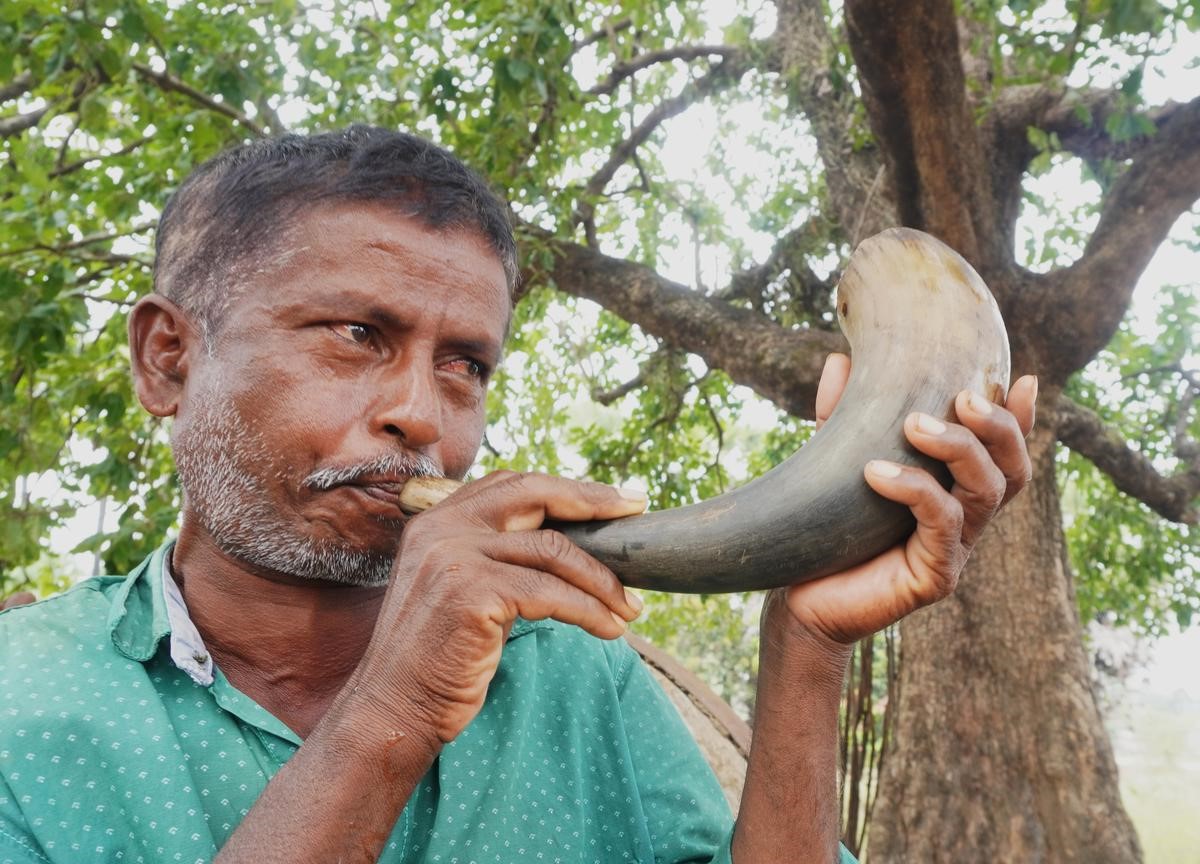
Disclaimer: Copyright infringement not intended.
Context
In a move to conserve the Indian Bison in their forests, the indigenous Koya tribe inhabiting the Papikonda hill range in Andhra Pradesh have made an exemplary transition by shedding the use of bison horns to make their traditional flute, Permakore, and replacing it with an instrument made of eco-friendly palm leaf
Details
- Permakore was made from bison horns called 'Permam Kore' in the Koya language, integral for cultural practices, dances (Kommu Koya), and signaling hunts.
Reasoning and Impact
- Declining Bison Population: The tribe observed a decline in Bison numbers and linked it to reduced sightings in their forests, prompting them to reconsider their practices.
- Eco-friendly Shift: Using eco-friendly palm leaves instead of bison horns for the flute as a conservation measure showcases the tribe's adaptability and environmental consciousness.
Traditional Practices and Significance
- Role in Hunting: Permakore played a vital role in signaling hunts, gathering villagers, and communicating during hunting expeditions. The instrument had immense cultural significance.
- Cultural Celebrations: The flute was central to celebrations of successful hunts and festivals like 'Bhumi Panduga,' symbolizing jubilation and communal feasts.
Palm Leaf's Role in Koya Culture
- Palm Leaf's Significance: Palm trees hold importance for Koyas, being used for thatching houses, carrying food, and now crafting eco-friendly instruments.
- Cultural Integration: Palm leaf flutes became integral to Koya rituals, including Bhumi Panduga, reflecting the tribe's evolving cultural practices.
Challenges and Conservation Efforts
- Conservation Efforts: The Andhra Pradesh Forest Department interacts with Koyas, discouraging wildlife hunting, including Indian Bison, under the Wildlife (Protection) Act, 1972.
- Conflict Over Bison Horns: Conflict arose between forest authorities and Kommu Koya dancers regarding possession of bison horns, symbolizing traditional attire.
- Unaddressed Concerns: Koya performers seek government-issued identity cards, a step taken in Telangana to resolve conflicts over bison horn possession.

Overview of the Koya Tribe
Identity and Language:
- Name and Dialect: Known as Koya, Koitur in their dialect. They speak the Koya language (Koya basha), a Dravidian language related to Gondi.
- Variations within Koya Tribes: Subgroups include Doli Koya, Gutta Koya or Gotti Koya, Kammara Koya, Musara Koya, Oddi Koya, Pattidi Koya, Rasha Koya, Lingadhari Koya, Kottu Koya, Bhine Koya, Raja Koya, etc.
Population & Habitat:
- Geographical Concentration: Predominantly found in northeastern Telangana, northern Andhra Pradesh, far-southern Chhattisgarh, and southwestern Odisha.
- Population Distribution: Approximately 590,739 in Andhra Pradesh and Telangana, 147,137 in Odisha, and around 46,978 Dorla (a mixed Gondi-Koya group) in Chhattisgarh (as per 2011 census).
Livelihood & Cultural Practices:
- Occupation Shift: Historically armed soldiers, now settled cultivators and artisans specializing in bamboo furniture and crafts.
- Agriculture & Diet: Cultivation of millets like Jowar, Ragi, Bajra, and tubers/roots. Dietary staples include various edible leaves and curries.
- Marriage Traditions: Maturation-based marriages, cross-cousin marriages permitted. Bride's maternal uncle influences the match, simple wedding rituals involving water, rice, and elders' blessings.
Challenges & Threats:
- Displacement & Migration: Threats due to development projects like the Polavaram Project causing displacement and migration, leading to issues of livelihood and malnutrition.
- Developmental Conflicts: Issues of access to land, forest, and employment leading to reliance on wage labor, affecting nutrition and health among the community.
Genetics and Ancestry:
- Genetic Characteristics: A genetic study showed Koya carrying 70% Y Haplogroup H, prevalent in South Asia, indicating a genetic link to the region's population.

Conclusion
The Koya tribe's shift from using bison horns to palm leaf flutes demonstrates their commitment to conservation. This transition, while preserving cultural practices, aligns with environmental sustainability. However, challenges persist regarding wildlife conservation, identity recognition for performers, and unresolved conflicts over traditional symbols.
MUST READ ARTICLES:
https://www.iasgyan.in/daily-current-affairs/indian-bisons
|
PRACTICE QUESTION
Q. Discuss the socio-cultural characteristics, geographical distribution, and contemporary challenges faced by the Koya tribe of India. How have historical transitions and modern developmental projects impacted their traditional lifestyle and societal structure? (250 Words)
|





